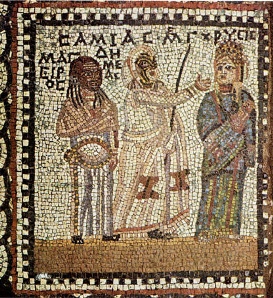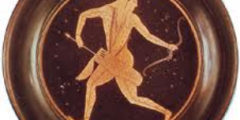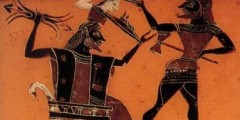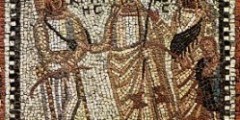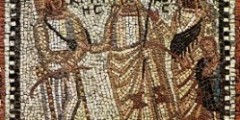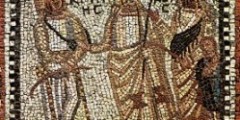The woman from Samos
March 22, 2013
Just a plug for my forthcoming edition of Menander’s Samia (The Woman from Samos), being published this autumn by Cambridge University Press; see http://www.cambridge.org/gb/knowledge/isbn/item7257906/Menander%20Samia%20(The%20Woman%20From%20Samos%20)/site_locale=en_GB .
The political wrestler
February 14, 2013
In the week when it has become probable that Rio de Janeiro in 2016 will see the last Olympic contests in wrestling, a sport that will have featured in 305 of the last 306 celebrations of the Games (275 ancient and 30 modern – it was omitted from the 1900 Paris programme), it seemed appropriate …
Top philosopher’s favourite comic dramatist
January 24, 2013
Famously, in his Poetics, the philosopher Aristotle tried to define the nature and social function of tragic drama and what made a good tragic play. But what we know as the Poetics is actually only the first half of Aristotle’s treatise. The second half dealt with comedy, and a recent book by Walter Watson (The …
Comedy Jones? HMS Tragedy??
January 16, 2013
Would you call your son or daughter Comedy? At least two Greek parents did, more or less, in the fourth century BC. Inscriptions tell us of a sculptor working at Epidaurus, named Komoidion, and a woman in the perfume business at Delos named Komoidia. No one (that we know of) named their child Tragedy. But that …
Nativity plays (striking a seasonal note)
December 17, 2012
If you’ve got dozens of gods and goddesses, who didn’t exist from eternity but came into being by a procreative process (though they didn’t necessarily have both a father and a mother, and weren’t necessarily born in the conventional manner), you’re likely to have some interesting divine birth stories; and if you also have a …
From Mount Sinai to Michigan: the rediscovery of Menander’s Epitrepontes (Postscript)
December 13, 2012
Just as I thought I had finished with the subject, comes news of yet another little papyrus fragment of Epitrepontes, again in the Michigan collection, again published by Cornelia Römer in the Zeitschrift für Papyrologie und Epigraphik (volume 183, pages 33-36). This little scrap, just 70mm long and 30mm across at its widest point, contains …
From Mount Sinai to Michigan: the rediscovery of Menander’s Epitrepontes (part 4)
December 6, 2012
The ten new papyrus fragments of Menander’s Epitrepontes that have been published during the last forty years have added very considerably, but rather unevenly, to our knowledge of all five acts of the play. One contains small parts (never more than eight letters) of about 70 lines from Act One; not much can be understood, …
From Mount Sinai to Michigan: the discovery of Menander’s Epitrepontes (part 3)
November 29, 2012
From Mount Sinai to Michigan: the recovery of Menander’s Epitrepontes (part 3) The fifth-century manuscript from Aphroditopolis in Upper Egypt, which came to light in the first decade of the twentieth century, proved to have had a chequered history. Some hundred years after it had been written, its then owner, a man named Flavius Dioscorus, …
From Mount Sinai to Michigan: the rediscovery of Menander’s Epitrepontes (part 2)
November 22, 2012
At St Catherine’s monastery on Mount Sinai, in 1844, Constantin von Tischendorf discovered two leaves of a manuscript containing dramatic dialogue. But they were glued into the cover of another book, and he could only read one side of each leaf. So he did, and took a transcript away with him. And nothing happened; the …
From Mount Sinai to Michigan: the rediscovery of Menander’s Epitrepontes (part 1)
November 15, 2012
Menander’s comedy Epitrepontes (The Arbitration) is an exquisitely constructed drama in which a baby, reluctantly abandoned by his mother to preserve her reputation and her five-month-old marriage, is reunited with his parents by a process to which almost every character in the play makes an essential contribution (often an unintentional one). Virtue repeatedly earns its …

